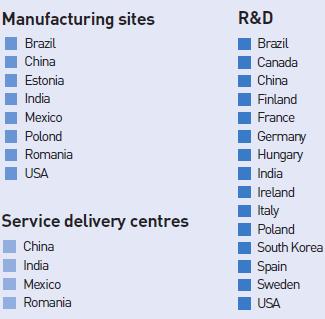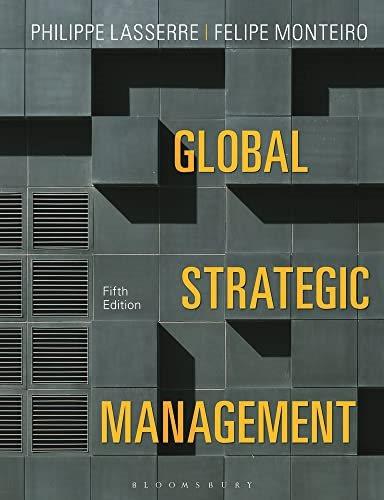Created in Stockholm in 1876 where Lars Magnus Ericsson designed telephones, Ericsson in 2021 is a global
Question:
Created in Stockholm in 1876 where Lars Magnus Ericsson designed telephones, Ericsson in 2021 is a global company that supplies communication infrastructure, services and software to the telecom industry and other sectors. With a global turnover of 233 billion SEK ($27.3 billion) and approximately 100,000 employees, it serves customers in more than 180 countries.
Ericsson operates in four major segments:
● Networks (71 per cent of sales): radio access networks solutions such as 5G, combining hardware products, such as antennae, and network deployment
● Digital services (16 per cent of sales):
software-based solutions for business and operational support, communication services, core networks and cloud infrastructure
● Managed services (10 per cent of sales):
networks and IT managed services, network design and optimization, and application development and maintenance to telecom operators
● Emerging business and others (3 per cent of sales): supports enterprises by providing reliable and secure cellular solutions that are easy to use, adopt and scale for global and local needs.
Geographically, Ericsson operates in 180 countries organized in five regional segments as represented below:
● North America: 32 per cent of sales
● Europe and Latin America: 24 per cent of sales
● North Asia: 14 per cent of sales
● South East Asia, Oceania and India: 13 per cent of sales
● Middle East and Africa: 10 per cent of sales The total production of products and services relies on eight manufacturing sites worldwide, four service delivery centres and 15 R&D centres (see below).
In addition, Ericsson deals with around 30,000 suppliers worldwide, and their products and services often account for a large part of the deliveries to customers. The suppliers have been divided into around 300 categories. Each category has a leader, who is responsible for optimizing the category, so that the right suppliers are chosen based on their numbers, quality, geographical spread, price and risk. The target is to minimize the number to get the most out of the supplier base based on economical, value creation and risk perspectives. The idea is to concentrate on the thirty or so biggest categories, which together represent around 90 per cent of the total spend. Once their numbers have been reduced, the remaining suppliers are segmented depending on their importance and potential to Ericsson.
A supplier relationship manager then makes sure that maximum value is extracted from the suppliers, and that they can contribute to Ericsson’s business through their innovation and ability to complement the Ericsson portfolio. A range of tools and processes are developed for this purpose. The company has created a particular function, Sourcing Business Partner (SBP). According to the company, The SBP supports and works closely to the sales organization, adding value to the process by contributing their knowledge of the supplier base, the market and different business models. This could include identifying that a customer can improve the supply chain by using other suppliers in preparation for an offer to take over a service, or identifying suppliers that can contribute to a new solution.
Questions:
1 To what extent does the SBP function linking the suppliers’ bases with the customer base make Ericsson better equipped to solve a customer’s problem?
2 What constraints and costs are generated with this SBP organization?
Step by Step Answer:

Global Strategic Management
ISBN: 9781350932968
5th Edition
Authors: Philippe Lasserre, Felipe Monteiro





